
PowrLink Zero Review – Wahoo Power Meter Pedals
Here is a summary review of the new Wahoo PowrLink Zero power meter pedals. For those who want more detail, there’s more after the summary.
-
Price - 85%
85%
-
Apparent Accuracy - 99%
99%
-
Build Quality & Design - 95%
95%
-
Features, Including App - 95%
95%
-
Openness & Compatability - 95%
95%
Verdict: Ticks every box with a massive green pen providing you love the SpeedPlay pedal system!
Wahoo PowrLink Zero pedals support power data standards, look cool, they’re accurate, priced right, calibrate themselves and are made well. What’s not to like?
A: It will be the SpeedPlay pedal system that either attracts you or pushes you elsewhere.
 If you want the cheapest power meter option you’ll go for the Favero Assioma pedals without a second thought; if you only buy Garmin then you’re just reading this for entertainment as you will buy the Garmin Rally pedals. Longstanding devotees of the SpeedPlay pedal system have already got their orders in for several pairs of PowerLink, well, that is if they haven’t already fainted with excitement.
If you want the cheapest power meter option you’ll go for the Favero Assioma pedals without a second thought; if you only buy Garmin then you’re just reading this for entertainment as you will buy the Garmin Rally pedals. Longstanding devotees of the SpeedPlay pedal system have already got their orders in for several pairs of PowerLink, well, that is if they haven’t already fainted with excitement.
The rest of us road cyclists are faced with a choice between the excellent power meter pedal options from the key players – Garmin Rally, Favero Assioma and now Wahoo SpeedPlay. Whilst Garmin and Favero now give you a choice of Look, (SPD) or SPD-SL pedal options, Wahoo gives you a fourth option for the first time – SpeedPlay
I won’t dwell too much on the SpeedPlay pedal system, suffice it to say you might consider SpeedPlay for their high degree of precision when setting up the shoe pedalling position. Plus they’re easier cleats to walk on than others. Don’t worry, you get a free set of cleats with the pedals and they will almost certainly fit your current road cycling shoes.
The pedal installation took me less than two minutes and the pairing by BLE to my Wahoo Elemnt Bolt 2 even less time. Next, I paired by ANT+ to my Garmin Fenix 7 as well, just because I could, and then the autocalibration prompt worked like a dream – not that it needed to as the pedals calibrate themselves as you ride! The cleats took a little longer to set up!
The 3-way, GPLlama accuracy tests on the Kickr Core were all great and the power numbers on the road seemed correct and responsive when compared to my Shimano R9100p.
My indoor training has been with Wahoo Systm on iOS and structured files downloaded from Training Peaks to my Wahoo Elemnt and, guess what? all was hunky-dory on the power meter front.
Was there a mish-mash of power data in the FIT files for my post-ride analyses? Nope, of course not. Lots of power and cadence numbers and NO obscure metrics that I’ll never look at.
In a way, this was one of the most boring reviews ever to research and test. Literally, nothing went wrong and as I said at the get-go….all the boxes that have been ticked by Wahoo are ticked with a massive green pen.
No one yet knows how well PowrLink Zero will stand the test of time over all riding scenarios. However, I’ve given them a rather wet, windy, bumpy and unpleasant time over the last couple of weeks in the Surrey Hills and all is good so far.
There will be no discounts at launch but you might get a token, new customer bonus from Wiggle (UK/EU), REI or Competitive Cyclist…nice if you can get it. And these pedals will rarely be on Amazon.
POWRLINK ZERO Dual-Side
POWRLINK ZERO Single-Side
Also available bundled with Wahoo ROLLR – smart roller.
Pros
- Cheaper than the equivalent Garmin Rally pedals
- Oozes quality of construction
- Autocalibration
- +/-1% manufacturer accuracy seems correct
- Super-simple installation & calibration
- 75 hours of ride time
- BLE & ANT+ support
- A cheaper, single-sided power option is a good entry-level choice
- Precise and highly adjustable pedal/cleat system with lots of float
Cons
- Not everyone will buy into the SpeedPlay pedal system
- Price premium versus Assioma pedals

Wahoo PowrLink Zero – How did we get here?
Bike Power Meters were once the reserve of the serious cyclist and the seriously wealthy cyclist. This has gradually changed over the last 5 years with Garmin leading the spread of cycling power to the masses with their Vector series of power meters. Vector was kinda OK but had issues along the way and the re-branding to Rally last year probably reflected Garmin’s confidence that they finally had a trustworthy product for the future. PowerTap was one of the more established brands from back-in-the-day and, having been bought by SRAM, are set to be a phoenix rising from the ashes of their P1/P2 power meter pedals of recent years. Favero is now an established power meter pedal player and DEFINITELY has the best value power pedals available today but they are relatively unknown in wider cycling circles and will eventually be bought by a large industry behemoth.
Wahoo Fitness came to all of this as a challenger brand, albeit now a very much established and respected brand. Inevitably we knew it would move into power meters and it just so happens that power meter pedals are the most consumer-accessible format. Thus Wahoo’s acquisition of SpeedPlay pedals came as only a minor surprise – a surprise because at the time SpeedPlay didn’t have a power meter product. They do now.
Power meter technologies have evolved significantly over the last 5-10 years and that evolution has now somewhat plateaued in terms of what there is left to ‘invent’.
Bike power meters can be located in several places on your bike ranging from air pressure sensors under your handlebars to ones in your crank axle, to ones glued to your cranks, to others in your rear wheel and to the ones we see today from Wahoo which are fully and naturally integrated into a pair of pedals.
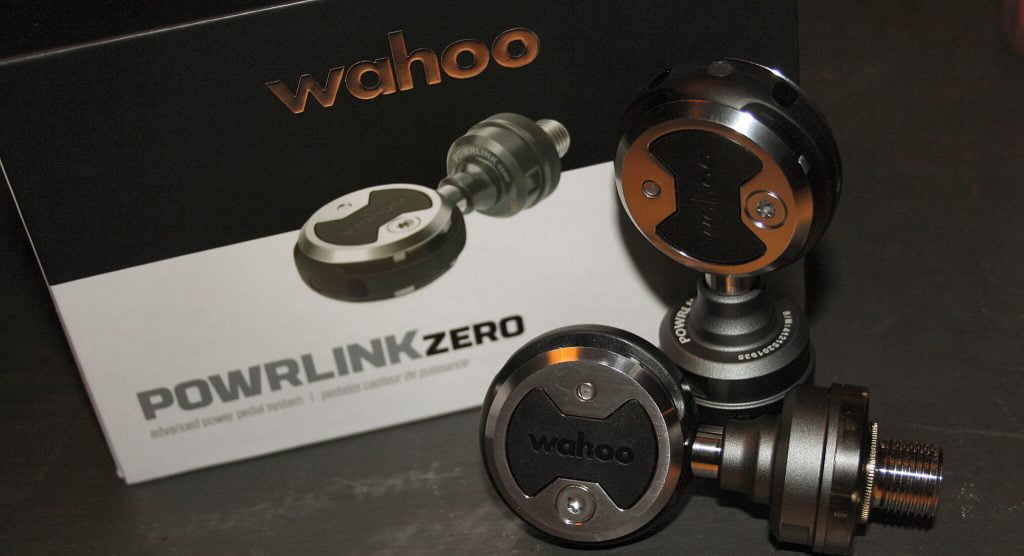
The power meter market is driven forward in two very distinct ways. One is where the power meter is part of the new bike you just bought. So that means that companies like Specialized need to get more into the game but it also means that the groupset makers like Shimano also need to offer a power meter somehow bundled with their 105/Ultegra/Dura-Ace groupsets. The second is the aftermarket, where you buy a power meter separately from the bike.
In terms of what the mass market customer wants, power meter peals will win the day as an aftermarket purchase with crank-based solutions perhaps running a close second being more likely to be installed on new bikes. All the other mysterious places to put a power meter are niche.
There are about 20 broad innovation types linked to power meters. Here are some of the key ones
- Accuracy – +/- 1% accuracy is all that is needed by most of us and even +/- 2-3% is probably OK in reality. All the pedal systems deliver that.
- Ease of installation – This used to be somewhat convoluted but the power meter pedals installations of 2022 are about as simple as you can get. Even changing a crankset from bike to bike is fairly easy but most people just wouldn’t consider doing it.
- Price – is always a key factor. However, the cost of manufacture, R&D and distribution is non-trivial. Thus the prices we see today from Favero are approaching the point where it becomes hard to make a good absolute profit without growing the market or growing market share. The likes of Garmin & Wahoo have a distinct advantage in that their brands are trustworthy and command a premium.
- Availability – We’ve pretty much got to the point now where it’s approaching a free-for-all. But this is not in the power meter companies’ interests as, in an ideal world servicing, repairs and returns would all much more easily be handled by a local bike shop. Of course, if you buy your $1000 power meter online from a thousand miles away to save $20 then taking it back to the online shop becomes non-trivial and more expensive for everyone. Wahoo’s retail distribution model seems to be to favour dealers who have a bricks-and-mortar presence, thus you will not routinely find Wahoo’s power meters and smart trainers on Amazon.
- Durability – Pedals get a lot of knocks and are relatively sensitive pieces of kit that might not always survive an encounter with an errant kerb or boulder. Thus we might see more exotic materials used to improve the strength of PMs. Wahoo PowerLink Zero has a stainless steel spindle.
- Cleat/Pedal system – Look/KEO and Shimano SPD/SPD-SL are the three major pedal systems. SpeedPlay is the fourth. Wahoo has a monopoly with SpeedPlay but it’s only a small monopoly. Clearly, it will be looking to grow it. But do large numbers of customers want the cute-looking, aero round pedals that they only occasionally see on the road?
- Connectivity – Power meters need to support ANT+ and they need to support at least 2 Bluetooth channels. Why? Firstly ANT+ is a defacto standard for most committed outdoor cyclists. Yet when we use Zwift or Wahoo SYSTM we may ‘need’ a Bluetooth connection for Zwift and another for your Wahoo ELEMNT. When using dual-sided power there also needs to be a unified Bluetooth channel for watches/bike computers that only support one channel to avoid them having to incorrectly double one pedal’s power.
- Metrics – Garmin’s Cycling Dynamics (2014) and Advanced Cycling Dynamics are often supported because many people are wowed by stats they rarely use. That’s right you’ll end up only using power and cadence. You might use various manipulations of smoothed power averages but those calculations are performed by your bike head unit rather than transmitted by your power meter. Maybe that’s why Wahoo only support the transmission of power and cadence? 😉
- Weight – Everyone loves to quote the ‘marginal gains’ phrase. The SpeedPlay pedals are a tad lighter than those from the competition, however when you add back the weight of each’s cleats then the Speedplay option is very slightly heavier. #Shrug
- Single-sided vs dual-sided – In the grand scheme of things I don’t think this really matters if you double one side or use the sum of both. Sure they’ll be different and I have all dual-sided PMs but as long as you have consistency on all your bikes I reckon you’ll be fine even if you compete semi-seriously.
- Upgradability – If you start off with single-sided power is there an upgrade option? (A: there will be in the future from Wahoo but not at launch)
- Support for carbon cranks & oval chainrings – These are niche but important considerations for some more serious riders. If you are one of them you need to do some more research!
- Battery life, battery recharge time, battery type, battery protection and charge status – Rechargeable batteries like PowerLink Zero that have a 75-hour level of longevity are great. That’s a lot of riding but at some point, you will run out of juice unless you are notified that you need to recharge either by LEDs or via your head unit. So that might bother you and then you go down the route of replaceable batteries only to find that your Garmin Vector battery cover leaks. Rechargeable battery pedals are a closed system and better IMHO. The one innovation to come is much faster recharge times.
- Q-Factors & Stack Heights – these are the factors that change your left/right distance from the bike frame and distance down from the saddle. If you have wide hips you might need a larger Q-factor. Stack height is not so important in an anatomical sense but it is a factor to account for in your saddle position in a precision bike fit. Wahoo quotes 13mm stack height and 55mm Q-Factor, these are both ‘normal’.
- 3-Axis cleat positioning – Even after you have your bike fit dialled into the Q-Factor and stack height you may still need left/right and fore/aft adjustment of the cleats. Wahoo gives you that with Speedplay as do other brands. However, the novelty of the SpeedPlay cleats is that you can also dial in their twistability (float) and the angle required to unclip. With other brands, you might need to buy different cleats and there are normally 3 cleat float options from them.

Power Link Zero product Options
You can either buy single-sided power or dual-sided power options. There’s also the option of a bundle with the new Wahoo Rollr which I reviewed here in detail in February
As of launch, there are no options to upgrade from single-sided (it is planned), no options with longer spindles and no options to support other cleat systems.
In The Box & Installation
There’s a whole host of bits and pieces in the box. It’s a little daunting until you realise that almost all of the bits are linked to various scenarios involving the cleats.
For the two power meter pedals themselves, you just stick them where pedals normally go and do ’em up really tightly with a standard 8mm hex wrench.
- Left and Right Power Pedals
- Standard Tension Cleats
- Washer (x2)
- Cleat Assembly
- Cleat Spacer
- Screw Packet
- Charging Cable and Clips
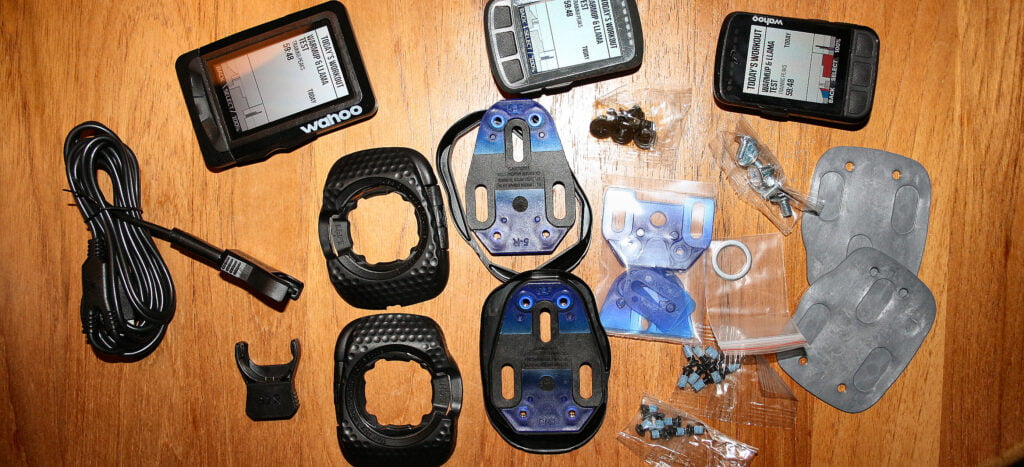
You might want to double-check the clearance with the crank arm and you can add one of the supplied washers if needed. Also quadruple check in the Wahoo app that you have made the correct crank length setting (172.5mm is the default), plus you’ll need to check the same setting on your head unit.
They come with a 50% charge which should keep you going for a few weeks. But when you do need to recharge them, the charger is VERY snug. That’s great in that you get a good connection but less great as the connector is a relatively flimsy bit of plastic and I’m not entirely convinced it will last the year out. Let’s see.
Assembling the SpeedPlay for my first-ever SpeedPlay ride was an experience. It takes a while but I’m not going to dwell on cleats too much in this review and stick to the Wahoo PowerLink Zero itself. That said, it’s worth pointing out that the cleat-set comes with shims in case your shoes rub the spindle and with differently shaped base plates for different sole shapes.
Pair and Go
You pair these to your app, bike computer or watch just like any other sports sensor. They seem to favour a Bluetooth connection. #Shrug. They can take ANT+ too.
Riding & Testing with Wahoo PowrLink Zero
When testing a product it’s easy to run or ride with it for 30 hours and never look at it, simply using it as a data collection tool. With the PowrLink, I’ve been using it as my main power meter and using other devices to collect comparison data. I’m not a good enough rider to be able to spot a 1 or 2% deviation. Perhaps in an FTP test, I’d spot 3% but I’d easily spot 5% just by looking at the live numbers. In that sense, the PowrLink Zero power data seems as ‘spot on’ as any other power meter I’ve used.
The PowrLink Zero power data seems as ‘spot on’ as any other power meter I’ve used.
Whilst Shimano SPD-SL is my favourite pedal/cleat system, I don’t mind SpeedPlay too much. I’ve only used them for the first time for a couple of weeks and I’ll give them a few months to see how it goes. They seem great for pure road use but the clipping in takes some getting used to, clipping out and pedalling with the default float seems fine.
Here are the results from an indoor trainer test that nicely covers accelerations and steady-state efforts at sensible power levels. After the calibrations at 16:19, the data was so similar I assumed I’d duplicated a file in some way…nope.

The same dataset also allows left/right power balance to be interrogated. I think my R9100P crankset is a good one and the right/left power balance data backs that assertion up slightly as here the R9100P shows more comparable left/right balance than the more variable PowrLink Zeros. Both are plausibly correct.
Here are parts of a Sunday group ride in the hills. I can only compare the 2 power meters on the road but you can see how they diverge a little more on bumpier roads compared to smooth ones
Here is a smooth road ride with some power-ups. There was only one deviation between the two PMs at 25:00. As each side’s power was similar, I put this power variation down to a cadence glitch on the Wahoo. With the frame-mounted magnet, I’ve found historically good cadence from the Shimano PM. Without another cadence sensor or extra PM, I’ll never know!
[More to add later]
Performance seems solidly accurate. Other reviewers who look at multiple side-by-side power meter comparisons all say the same thing. These babies are accurate!
Wahoo PowerLink vs Garmin Rally vs Favero Assioma vs The Rest
I’ve already touched on the comparison further above. All current power meter pedals have materially the same levels of performance with these key exceptions
- Look & Shimano SPD-SL pedal/cleats are only offered by Assioma and Rally.
- SPD is only offered by Garmin and SRM X-Power for MTB
- Advanced cycling metrics to analyse your technique are not offered by Wahoo, only by Favero and Garmin
- Broadly speaking Wahoo and Favero have 70-hour battery life and Garmin Rally is double that.
- Garmin Rally has replaceable batteries and is not rechargeable.
- Favero Assioma is about HALF the price of Garmin Rally and Wahoo PowrLink sits toward the Garmin end of that price range.
- In terms of aesthetics, Garmin probably just wins the day but the overall Wahoo look is of a similar but more slimline version of the Assioma ‘hub’
Wahoo PowrLink Zero Technical Specs
| Wahoo PowrLink Zero Technical Specs | |
| Physical Dimensions: | 9 x 4cm |
| Crank Lengths Supported | all standard sizes up to 210mm |
| Weight: | 276g per pair |
| Stack Height: | 13mm (3 holes) |
| Q Factor: | 55mm |
| Spindle Material: | Stainless Steel |
| Bearing Type: | Triple Sealed Cartridge & Needle Bearings |
| Cornering Clearance: | 39° |
| Cleats: | Standard Tension Included (Easy Tension Compatible) |
| Release Angle: | Micro-Adjustable from 0° to 7.5° |
| Pedal Float: | Adjustable from 0° to 15° |
| Cleat Fore-Aft Adjustability: | Up to 13mm |
| Cleat Left-Right Adjustability: | Up to 6mm |
| Walkable Cleat: | Yes (adaptor included) |
| Battery Life: | Up to 75 hours, 90-120 minutes for a full recharge |
| Connectivity: | ANT+, Bluetooth |
| Max Rider Weight: | 250lbs |

Wahoo PowrLink Zero Review – Final Thoughts
Wahoo has a history of innovation and doing things a little bit differently. Just take the Wahoo Rival Watch which introduced seamless transition and then later introduced a favourite screen which, after a little while, your display device always pops back to. Clever stuff. New stuff. PowrLink Zero brings more innovation with a new pedal format that supports power and it does that with accuracy as well. Awesome for a first-timer.
In some ways, I’m more excited about today’s announcement by Wahoo of their smart Rollr trainer. Rollr has wide appeal as a universal trainer, though perhaps it shouldn’t because of the limitations of the resistance control and lack of onboard power. Whereas the SpeedPlay cleats on these PowrLink Zero pedals perform awesomely but the format will limit the appeal when perhaps it shouldn’t!
The million-dollar observation and question are: This is a great product but will it sell as well as it should?
I definitely recommend these pedals but you will already know if they are for you or not.
Pricing – Wahoo PowrLink Zero Review
There will be no discounts at launch but you might get a token, a new customer bonus from Wiggle (UK/EU), REI or Competitive Cyclist…nice if you can get it. These pedals will never be on Amazon.
POWRLINK ZERO Dual-Side
POWRLINK ZERO Single-Side
Also available bundled with Wahoo ROLLR – smart roller.



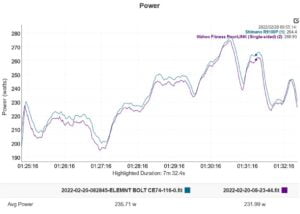
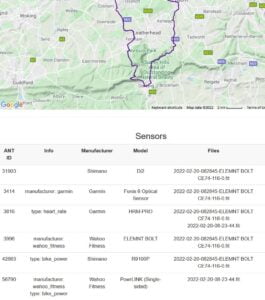


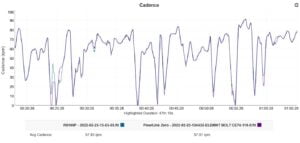


I waited years and years for these, ever since MetriGear was working on speed play compatible pedals around 2008! But unfortunately already moved on to Rally pedals which work for both MTB and road. I still far prefer the SpeedPlay X (and Frog) pedals with ice like float, but already invested too much in Rally.
14 years definitely is a long wait